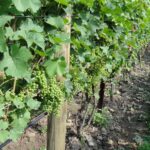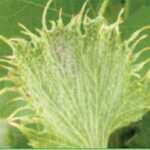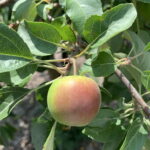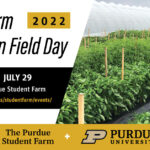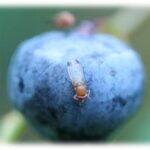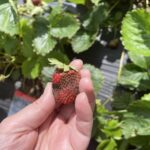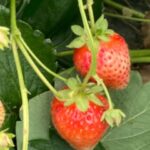Now is the time to start thinking about leaf removal in grapevines. Cluster zone leaf removal can lower risk of disease, increase spray penetration and even improve fruit quality. The period immediately after bloom to 3 weeks post-bloom is the most effective time for leaf removal. Leaf pulling after this time can increase the risk[Read More…]
Found 731 Articles
Pesticide Drift Grapes are particularly sensitive to growth regulator herbicides, such as 2,4-D and dicamba, which are widely used in corn and soybean production. These products can injure the vines, significantly reduce yields and contaminate the fruit even at extremely low rates. The most common symptoms of pesticide exposure include distortion of leaves and stunting[Read More…]
Topics of July strawberry chat are Weed Control and Insect Pest Management. Our guests are Drs. Stephen Meyers and Samantha Willden, and Mr. David Doud. Dr. Meyers is an assistant professor and weed scientist at the Horticulture and Landscape Architecture Department. Dr. Meyers will discuss weed management and herbicide options in matted-row and plasticulture strawberry[Read More…]
For those growing delicious small fruits, including cherries, raspberries, blackberries, blueberries, and strawberries, on a U-pick farm or even your backyard, now is the time to be on the lookout for spotted-wing drosophila (SWD), especially if your berries are ripe or in the ripening stage. Most of you are likely familiar with SWD (Figure 1),[Read More…]
Wet weather throughout the Midwest has resulted in explosive anthracnose outbreaks in Indiana, Illinois, Kentucky and Ohio. Although it is too late to save the fruit crop, actions can be taken to protect daughter-plant establishment and to develop a plan for future disease management. Anthracnose is one of the most devastating diseases impacting strawberry production[Read More…]
It is the policy of the Purdue University that all persons have equal opportunity and access to its educational programs, services, activities, and facilities without regard to race, religion, color, sex, age, national origin or ancestry, marital status, parental status, sexual orientation, disability or status as a veteran. Purdue is an Affirmative Action Institution. This material may be available in alternative formats. 1-888-EXT-INFO Disclaimer: Reference to products in this publication is not intended to be an endorsement to the exclusion of others which may have similar uses. Any person using products listed in this publication assumes full responsibility for their use in accordance with current directions of the manufacturer.
